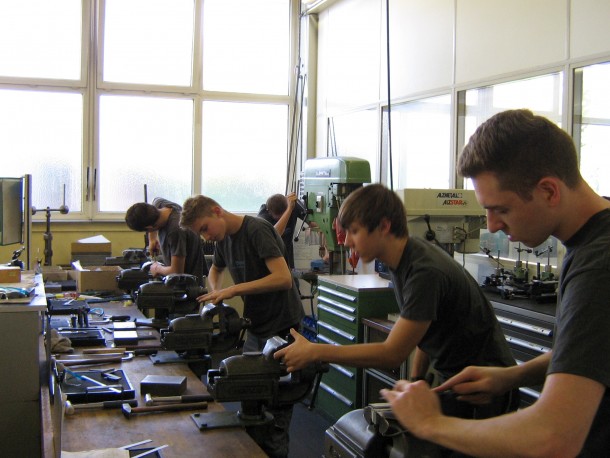"The Davenport screw machine won World War II," Massimo Bonaldo said to me, as we ate kebabs in a rural village 40 minutes from the center of Hannover, where I was to attend the EMO Machine Tool Show the following day. Massimo is the technical manager of Tajmac-MTM S.p.A., the Italian headquarters of ZPS, one of Europe's top machine tool builders.
I had trekked throughout Germany the previous two weeks, visiting elite manufacturers and machine tools dealers. I had walked through state-of- the-art shops, packed with the latest INDEX MS machines, Hydromats and CNC machining centers. And now I found myself hanging out at midnight with three Italian ZPS technicians in middle-of-nowhere Germany, with one of the company's top engineers giving me a history lesson on the good old noisy American Davenport. The reason the Davenport won World War II for the Allies, Massimo explained, was that the Germans were using European single-spindle machines to bang out ammunition, while the Americans spit out bullets like mad with five-spindle Davenports. Times have changed since the days of American multi-spindle domination. Today Germany is the place to be to see tons of manufacturers full of the best multi-spindle screw machines on the market. That's why Graff-Pinkert sent me there to find machines.
The first shop I visited on my trip was Brehm Präzisionstechnik GmbH & Co. KG, about 100 km southeast of Stuttgart. The shop was immaculate and packed with some of the best modern machine tools on the market. It was one of those places us machinery dealers like to say "is so nice, you can lick the floor." I had barely met Thomas Brehm, the company's owner, at a conference in Europe a year before. I emailed him prior to my trip to say I was coming to Germany and wanted to visit his shop, even if he didn't have anything he wanted to buy or sell, and he graciously extended me the invitation. When I arrived, he took me to lunch at a local restaurant, where I ate some excellent veal with mushrooms. Brehm spent several hours showing me around the shop, which featured 20 beautiful INDEX MS 32 machines. He also gave me the inside scoop on running a manufacturing business in Germany.
Because of labor laws established long ago in Germany (similar to those in much of Europe), it is generally illegal to fire employees. Almost all of Brehm's employees stay at the company 30 to 40 years, which is why he characterized employment at the company as a "marriage." Brehm said that more than 50 16-year-olds compete for five apprenticeship spots each year at the company. To me, the idea of a 16-year-old signing up to a job for life is difficult to fathom. What if the kid no longer wants a factory job in five years? How can an employer know what type of person a 16-year-old adolescent will be five years, let alone 30? But who am I to judge, as German companies like Brehm appear to have lots of content, quality workers, while American companies repeatedly lament that they can't find good talent.
Later in the trip, I visited some shops near the western border of Germany, not far from Cologne. One dealer had 10 old Gildemeisters in the basement of his home that doubles as his office. The machines belonged to his family's production business, which existed prior to him becoming a dealer. I visited another job shop in that same region, high up in the mountains. I crawled up one-lane roads in the rain to get there. I asked the company's owner, a fourth generation in the family business, why so many shops in Germany are located in such remote, crazy spots? He told me that his company was 122 years old, so in the old days the factory needed water power from the mountain streams.
I hadn't heard of the shop in the mountains before that day. My visit to the shop had been arranged on the spur of the moment that morning when I got a tip that they may have had some equipment for sale. When the owner greeted me at the door, I was amazed as he handed me a crisp business card belonging to Rex Magagnotti, another salesman at Graff-Pinkert, who had traveled to the shop 16 years before. I suppose that a 16-year time lapse between our two visits was just a blip in the company's 122-year lifespan.
Question: If you could return to one place you've visited in the world, where would it be?
